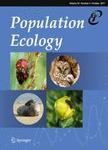版权所有:内蒙古大学图书馆 技术提供:维普资讯• 智图
内蒙古自治区呼和浩特市赛罕区大学西街235号 邮编: 010021

作者机构:Univ Sao Paulo Luiz de Queiroz Coll Agr ESALQ Dept Forest Sci Quantitat Methods Lab Piracicaba Brazil Western EcoSyst Technol Inc Cheyenne WY USA Univ Sao Paulo Luiz de Queiroz Coll Agr ESALQ Dept Biol Sci Anim Ecol Lab Piracicaba Brazil
出 版 物:《POPULATION ECOLOGY》 (人口生态学的研究)
年 卷 期:2010年第52卷第2期
页 面:263-270页
核心收录:
学科分类:0710[理学-生物学] 07[理学] 09[农学] 0713[理学-生态学]
基 金:Fundacao de Amparo a Pesquisa do Estado de Sao Paulo-FAPESP [00/00180-9 00/00602-0 00/00582-0]
主 题:Agroecosystem Herbivore Log-linear models Monitoring Observer error
摘 要:Capybaras were monitored weekly from 1998 to 2006 by counting individuals in three anthropogenic environments (mixed agricultural fields, forest and open areas) of southeastern Brazil in order to examine the possible influence of environmental variables (temperature, humidity, wind speed, precipitation and global radiation) on the detectability of this species. There was consistent seasonality in the number of capybaras in the study area, with a specific seasonal pattern in each area. Log-linear models were fitted to the sample counts of adult capybaras separately for each sampled area, with an allowance for monthly effects, time trends and the effects of environmental variables. Log-linear models containing effects for the months of the year and a quartic time trend were highly significant. The effects of environmental variables on sample counts were different in each type of environment. As environmental variables affect capybara detectability, they should be considered in future species survey/monitoring programs.